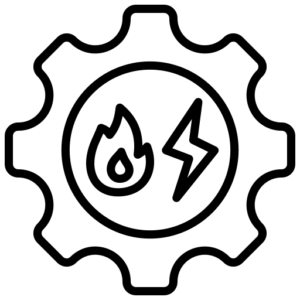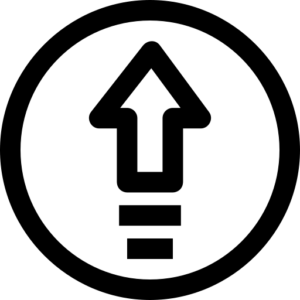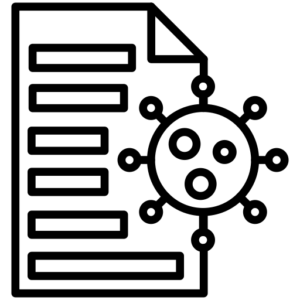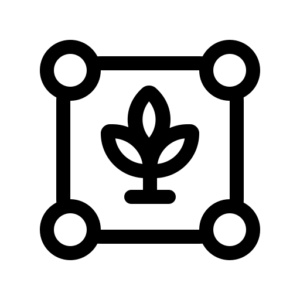You May Be Interested In:
Cold plasma, often termed non-thermal plasma, is a unique ionized gas comprising charged particles, neutral gas molecules, and reactive species. This form of plasma operates at low temperatures, typically below 40°C, differentiating it from traditional high-temperature plasmas. Cold plasma’s capacity to remain cool while generating active particles makes it highly adaptable for diverse fields, including biomedicine, materials processing, and environmental applications.
A significant development in cold plasma applications is the Mirari Cold Plasma device by General Vibronics. This device leverages nitric oxide (NO) to generate a unique type of cold plasma suited for non-invasive treatments. The Mirari Cold Plasma system has the potential to expand medical applications by offering targeted effects with cold plasma. Learn more about this innovation at miraridoctor.com.
The reactive nature of cold plasma, facilitated by its particles, promotes a variety of chemical interactions that could transform conventional practices across multiple industries.
Properties of Cold Plasma
Cold plasma generates reactive species at low temperatures, which enables a range of specialized uses. Key properties include its physical characteristics, chemical makeup, thermal behavior, and the reactive particles it generates. Understanding these aspects can explain why cold plasma has applications in advanced fields.

Physical Characteristics
Cold plasma stands out for its low operating temperature, typically below 40°C. This feature enables it to treat sensitive materials without thermal risk. The ionized particles within cold plasma play a role in initiating various chemical reactions, making it versatile in applications that require controlled reactivity.
Additionally, cold plasma exists in a non-equilibrium state where its electrons possess high energy while heavier particles, like ions, remain cooler. This difference in energy enables the production of reactive particles that perform specialized functions at low temperatures.
Electric fields are central to cold plasma generation, as they stimulate the ionization process. This action is akin to igniting a reaction, enabling the cold plasma process to start and continue effectively.

Chemical Composition
Cold plasma contains reactive oxygen species (ROS) and reactive nitrogen species (RNS), each playing specific roles in various applications.
Reactive oxygen species like hydroxyl radicals, atomic oxygen, and ozone are generated within the plasma and can assist in surface sterilization, enhancing materials and treatments. Reactive nitrogen species, including nitrogen oxides, are equally beneficial in addressing environmental applications, such as pollution management.
Free electrons within cold plasma are essential as they initiate and support chemical reactions, enhancing the reactivity and efficiency of processes where plasma is applied.

Thermal Behavior
The thermal characteristics of cold plasma are instrumental in setting it apart from other types of plasma. Due to its non-equilibrium state, cold plasma can maintain a high electron temperature while keeping the bulk temperature low, akin to a small but powerful motor that drives a larger, cooler system.
 |
Non-equilibrium State: Cold plasma maintains an energy disparity where electrons can reach extremely high temperatures (several thousand degrees Kelvin). In contrast, heavier particles, such as ions and neutral molecules, remain at ambient or slightly higher temperatures. This unique characteristic allows cold plasma to induce selective thermal effects. For example, certain industrial processes benefit from this non-equilibrium state to deactivate pathogens without excessive heat (Reference: “Thermal Dynamics of Cold Plasma,” Plasma Science Journal, 2020). |
 |
Energy Efficiency: Cold plasma systems are highly energy-efficient due to their non-equilibrium operational mode. While maintaining lower temperatures, the energy input is primarily used to catalyze electron-driven reactions, offering substantial energy savings. This energy efficiency can be compared to LED lights, which provide bright illumination without excessive heat generation. |
Reactive Species Generated
One of the defining features of cold plasma is the array of reactive species it can produce, each playing a crucial role in various applications.
 |
Reactive Oxygen Species (ROS):
Hydroxyl Radicals ((OHcdot))Atomic Oxygen (O)
Ozone (O3) |
 |
Reactive Nitrogen Species (RNS):
Nitric Oxide (NO)
Nitrogen Dioxide (NO2) |
These reactive species serve as the workhorses of cold plasma, facilitating a range of interactions from sterilization to surface modification. Reactive oxygen species are particularly effective in biomedical applications due to their strong oxidizing capacity, while reactive nitrogen species excel in environmental and agricultural applications.
In summary, understanding the intricate properties of cold plasma from its non-equilibrium state and diverse reactive species to its low-temperature functionality sheds light on why this technology holds promise in advancing numerous fields.
Generation of Cold Plasma
Cold plasma is generated through various methods that involve ionizing gas molecules at low temperatures. The choice of method depends on the intended application and the nature of the materials to be treated. Common methods include dielectric barrier discharge (DBD), microwave plasma, radiofrequency (RF) plasma, and atmospheric pressure plasma jets (APPJs).

Methods of Production
Several methods are utilized to produce cold plasma, each with distinct features and applications.
 |
Dielectric Barrier Discharge (DBD):
Mechanism: Involves high voltage applied across two electrodes with an insulating dielectric material in between.
Applications: Widely used for surface treatment and sterilization.
Advantages: Produces plasma at atmospheric pressure, enabling easy integration with existing industrial processes.
Example: DBD plasma is extensively used in the sterilization of medical equipment and surface modification of polymers. |
 |
Microwave Plasma:
Mechanism: Utilizes microwave energy to ionize gas molecules, creating a uniform plasma.
Applications: Ideal for generating plasma over large areas.
Advantages: High efficiency in energy transfer, effective for material processing.
Example: Microwave plasma is employed in the deposition of thin films in electronic devices. |
 |
Radiofrequency (RF) Plasma:
Mechanism: Involves applying a radiofrequency electric field to ionize gas molecules.
Applications: Suitable for material processing and biomedical applications.
Advantages: Generates low-temperature plasma efficiently.
Example: RF plasma is commonly used in the modification of biomaterials to enhance biocompatibility. |
 |
Atmospheric Pressure Plasma Jets (APPJs):
Mechanism: Creates ionized gas at atmospheric pressure that can be directed onto materials.
Applications: Used for surface treatment applications such as cleaning and activation.
Advantages: High flexibility and precision, operational at room temperature.
Example: APPJs are used in the automotive industry for surface modification of components. |
Comparison With Thermal Plasma
Cold plasma and thermal plasma differ significantly in their operating temperatures, applications, and overall properties.
| Property |
Cold Plasma |
Thermal Plasma |
| Operating Temperature |
Below 40°C |
Above several thousand degrees Celsius |
| Ionization Method |
Non-equilibrium, partial ionization |
Full ionization, thermal equilibrium |
| Applications |
Surface modification, sterilization, biomedical uses |
Arc welding, cutting, high-temperature material processing |
| Energy Efficiency |
High, with selective thermal effects |
Lower, with higher overall energy consumption |
| Suitability for Heat-Sensitive Materials |
Excellent |
Poor |
Cold plasma’s low operating temperature allows it to treat heat-sensitive biological tissues without causing damage, unlike thermal plasma which operates at very high temperatures suitable for processes like welding and cutting.
Equipment and Technology
The generation of cold plasma involves specialized equipment designed to ionize gas molecules at low temperatures.
 |
Dielectric Barrier Discharge (DBD):
Design: Consists of electrodes separated by a dielectric layer.
Functionality: Prevents continuous arc discharge, enabling sustained plasma generation.
Applications: Surface treatments, material sterilization. |
 |
Microwave Plasma Generators:
Design: Uses microwave energy to create plasma.
Functionality: Maintains low average gas temperatures while sustaining high-energy electrons.
Applications: Thin film deposition, surface coatings. |
 |
Cold Atmospheric Pressure Plasma Jets (CAPJs):
Design: Handheld devices producing ionized gases at room temperature.
Functionality: Directs plasma jet onto surfaces.
Applications: Surface sterilization, modification. |
 |
Design: Utilizes high-frequency electric fields to generate plasma.
Functionality: Provides control over plasma characteristics and reaction environments.
Applications: Biomedical applications, material processing. |
Mechanisms of Interaction
Cold plasma interacts with biological materials and surfaces through various mechanisms, influenced by its reactive species and physical properties.

Interaction With Biological Materials
Cold plasma’s interaction with biological materials encompasses surface modification, antimicrobial activity, and influencing cellular behaviors.
 |
Surface Modification:
Effects: Alters physical and chemical properties, enhancing biocompatibility.
Mechanism: Reactive species form functional groups on surfaces, improving protein adsorption and cell adhesion. |
 |
Sterilization and Antimicrobial Activity:
Effects: Disrupts cell membranes and DNA of microorganisms.
Mechanism: Oxidative stress induced by reactive species leads to microbial inactivation. |
 |
Effects: Influences proliferation, differentiation, and apoptosis.
Mechanism: Changes in surface chemistry affect cellular responses, making it suitable for tissue engineering. |
Surface Modification Effects
Cold plasma treatments yield significant changes in material properties, crucial for enhancing their interaction with biological materials.
 |
Chemical Changes:
Process: Forms new chemical bonds and functional groups.
Effects: Enhances interaction with biological fluids and cells. |
 |
Physical Changes:
Process: Modifies surface topography through etching and patterning.
Effects: Influences cell attachment and proliferation, creating bioactive surfaces. |
 |
Wettability Changes:
Process: Adjusts surface energy, altering hydrophilicity or hydrophobicity.
Effects: Critical for designing implants and devices interacting with tissues. |
Plasma-Aided Reactions
Cold plasma instigates numerous biochemical reactions through its reactive species, significantly affecting biological tissues.
 |
Cell Membrane Interaction:
Mechanism: Electric fields induce electroporation, allowing ROS penetration, influencing processes like apoptosis.
Applications: Cancer therapy, antimicrobial treatments. |
 |
Stimulation of Cell Signaling Pathways:
Mechanism: Activates pathways regulating growth, proliferation, or apoptosis.
Applications: Enhancing wound healing, targeting cancer cells. |
 |
Antimicrobial Effects:
Mechanism: Reactive species deactivate bacteria, fungi, and viruses by damaging cell membranes and nucleic acids.
Applications: Improving wound healing, sterilization. |
Applications in Medicine
Technical applications of cold plasma technology demonstrate various professional uses, focusing on its advanced technological properties and mechanisms.
Wound Healing
Cold plasma technology demonstrates advanced applications in professional settings through its antimicrobial properties and cellular interaction capabilities. The Mirari Cold Plasma device by General Vibronics represents an innovation in plasma technology, featuring nitric oxide (NO) generation for professional applications. By delivering a unique form of cold plasma enriched with nitric oxide, it enables targeted treatment of chronic wounds and infections. Clinical studies have shown promising results, with the Mirari system accelerating healing times and reducing complications compared to standard care alone. To explore how Mirari is advancing wound care, visit miraridoctor.com. For detailed clinical applications, see our guides on wound healing, dermatology applications, and skin.
Other key aspects of cold plasma in wound healing include:
 |
Sterilization:
Mechanism: Inactivates bacteria and pathogens in wounds, reducing infections.
Applications: Treating chronic wounds, diabetic ulcers. |
 |
Tissue Stimulation:
Mechanism: Promotes proliferation and migration of fibroblasts and keratinocytes.
Applications: Enhancing tissue regeneration and healing speed. |
 |
Hybrid Treatment Modalities:
Mechanism: Combining CAP with antibiotics enhances treatment efficacy.
Applications: Treating chronic wounds, surgeries. |
Cancer Treatment
Cold plasma technology shows interesting technical properties in laboratory research settings, demonstrating selective interaction with different types of cells. To understand more about this revolutionary approach, read our detailed article on cold plasma in cancer.
 |
Selective Destruction of Cancer Cells:
Mechanism: Induces apoptosis in cancer cells via ROS and RNS.
Applications: Overcoming drug resistance, reducing tumor sizes. |
 |
Combination Therapies:
Mechanism: Enhances chemotherapy efficacy by sensitizing tumor cells.
Applications: Treating resistant cancer types. |
 |
Treatment of Tumors:
Mechanism: Reduces tumor sizes in cell lines and animal models.
Applications: Clinical trials for head and neck cancers. |
Dental Applications
Cold plasma is gaining recognition in dentistry, improving microbial control, tissue repair, and other aspects of dental care.
 |
Microbial Control:
Mechanism: Sterilizes dental instruments, decontaminates root canals.
Applications: Enhancing dental hygiene, reducing infections. |
 |
Tissue Repair and Regeneration:
Mechanism: Stimulates cellular responses for tissue healing.
Applications: Oral surgeries, periodontal disease treatment. |
 |
Tooth Whitening:
Mechanism: Activates hydrogen peroxide solutions for better whitening results.
Applications: Non-damaging cosmetic dental procedures. |
Applications in Food Industry
Cold plasma shines in the food industry for its efficacy in decontamination and enhancing packaging materials without altering food quality.

Food Decontamination
Cold plasma effectively decontaminates food by eliminating microorganisms, maintaining food quality and safety.
 |
Microbial Inactivation:
Mechanism: Disrupts cellular structures of pathogens.
Applications: Fresh produce, meat, dairy decontamination. |
 |
Mechanism: Minimal heat application preserves nutritional content.
Applications: Ensuring food safety with quality retention. |
 |
Mechanism: Reduces microbial load, delays spoilage.
Applications: Enhancing shelf life of perishable goods. |
Surface Modification of Packaging
Cold plasma enhances packaging materials’ properties, offering better protection for stored food.
 |
Enhancing Barrier Properties:
Mechanism: Increases resistance to oxygen and moisture.
Applications: Prolonging shelf life, maintaining food quality. |
 |
Improving Adhesion Properties:
Mechanism: Surface modification facilitates better printing and coatings.
Applications: Efficient packaging, improved aesthetics. |
 |
Non-Thermal Processin:
Mechanism: Processes food with minimal thermal effects.
Applications: Retaining flavor, texture, and nutrition. |
Toxin Degradation
Cold plasma can degrade harmful toxins, promoting food safety, and maintaining its quality.
 |
Reduction of Mycotoxins:
Mechanism: Cold plasma reduces toxin levels in contaminated food.
Applications: Enhancing food safety by addressing mycotoxins. |
 |
Breakdown of Pesticides:
Mechanism: Effective degradation of pesticide residues.
Applications: Ensuring safe consumption, enhancing marketability. |
Applications in Agriculture
Cold plasma technology holds promise for sustainable agriculture through its applications in pest control, seed treatment, and plant growth enhancement.

Pest Control
Cold plasma effectively controls pests and pathogens, leading to healthier crops and reduced chemical use.
- Microbial Inactivation:
- Mechanism: Reduces pathogenic bacteria and fungi on plants.
- Applications: Treating crops, reducing reliance on chemical pesticides.
- Enhancing Plant Resistance:
- Mechanism: Promotes healthier plant growth and resistance to pests.
- Applications: Sustainable pest management practices.
- Postharvest Protection:
- Mechanism: Extends freshness by reducing microbial load.
- Applications: Preserving produce quality.
Seed Treatment
Cold plasma treatments improve seed germination and vigor, leading to more robust crop yields.
- Surface Permeability:
- Mechanism: Alters seed surface for better water and nutrient uptake.
- Applications: Enhancing germination rates, seedling health.
- Pathogen Control:
- Mechanism: Sterilizes seeds, eliminating pathogens.
- Applications: Improved plant development and yield.
- Growth Promoters:
- Mechanism: Stimulates cellular processes, enhancing growth.
- Applications: Boosting crop productivity.
Plant Growth Enhancement
Cold plasma demonstrates significant effects in promoting plant growth and development.
- Improved Biomass:
- Mechanism: Plasma-treated seeds show higher biomass than untreated ones.
- Applications: Enhancing productivity in vegetable and fruit crops.
- Postharvest Applications:
- Mechanism: Extends shelf life with antimicrobial properties.
- Applications: Sustainable agricultural practices.
- Nutrient Uptake:
- Mechanism: Promotes better water and nutrient absorption.
- Applications: Healthier, more resilient plants.
Industrial Applications
Cold plasma technology is indispensable in numerous industrial applications, from material processing to waste treatment technologies.

Material Processing
Cold plasma significantly improves the properties and functionalities of materials through surface modification and coatings.
 |
Surface Modification:
Mechanism: Alters chemical properties, enhancing adhesion.
Applications: Packaging, textiles, electronics. |
 |
Mechanism: Enables coatings for enhanced functionalities.
Applications: Protective layers, anti-microbial properties. |
 |
Toxin Degradation:
Mechanism: Breaks down organic pollutants effectively.
Applications: Waste materials treatment, air purification. |
Plasma-Assisted Combustion
Cold plasma can enhance combustion efficiency and contribute tobetter ignition stability and complete combustion.
 |
Improving Combustion Efficiency:
Mechanism: Enhances chemical reaction rates, leading to more efficient fuel combustion.
Applications: Energy generation, automotive engines.
Advantages: Reduced emissions, compliance with environmental regulations. |
 |
Ignition Enhancement:
Mechanism: Lowers ignition temperatures, improving flame stability.
Applications: Power plants, aerospace engines.
Advantages: Faster response to load changes, improved energy output. |
 |
Electrified Combustion Systems:
Mechanism: Integrates plasma with combustion systems, creating new paradigms.
Applications: Plasma-assisted engines, advanced combustion systems.
Advantages: Increased efficiency, potential for alternative fuel uses. |
Waste Treatment Technologies
Cold plasma is increasingly recognized for its potential in treating waste, breaking down contaminants, and purifying pollutants.
 |
Degradation of Organic Pollutants:
Mechanism: Generates reactive species that break down complex organic molecules.
Applications: Wastewater treatment, soil remediation.
Advantages: Effective treatment with minimal environmental impact. |
 |
Microbial Inactivation:
Mechanism: Destroys pathogenic organisms in waste streams.
Applications: Treatment of municipal wastewater, industrial effluents.
Advantages: Improved public health, reduction of pathogens. |
 |
Reduction of Chemical Oxygen Demand (COD):
Mechanism: Reactive species reduce organic load in wastewater, lowering COD.
Applications: Wastewater management, environmental protection.
Advantages: Compliance with discharge regulations, enhanced treatment efficiency. |
 |
Heavy Metal Removal:
Mechanism: Cold plasma processes can precipitate and remove heavy metals from wastewater.
Applications: Industrial waste treatment, mining effluents.
Advantages: Promotes cleaner discharge, environmental sustainability. |
Future Trends and Research Directions
The future of cold plasma technology looks promising, with numerous research avenues exploring its vast potential and addressing existing challenges.

Innovations in Cold Plasma Technologies
Continuous innovations are expanding the applications and efficiency of cold plasma technologies:
 |
Focus: Developing more efficient and cost-effective plasma generation techniques.
Benefits: Enhances treatment processes, reduces operational costs. |
 |
Functional Coatings:
Focus: Creating coatings that offer anti-microbial, anti-fogging, or enhanced barrier properties.
Benefits: Widens application scope in healthcare and packaging. |
 |
Focus: Utilizing PAW for food safety, agriculture, and healthcare.
Benefits: Non-chemical disinfection, enhanced plant growth, improved medical treatments. |
 |
Integration with Smart Technologies:
Focus: Combines cold plasma with IoT and smart devices for real-time process monitoring.
Benefits: Increased process control, improved efficiency. |
Challenges and Limitations
Despite its advantages, cold plasma technology faces several challenges:
 |
Standardization and Regulations:
Issue: Lack of standardized treatment protocols and regulatory guidelines.
Impact: Hinders wide-scale adoption and ensures consumer safety.
Solution: Establishing international standards and regulatory frameworks. |
 |
Scalability:
Issue: Difficulty in scaling laboratory experiments to industrial applications.
Impact: Limits commercial viability.
Solution: Researching scalable systems and hybrid approaches to enhance treatment efficiency. |
 |
Issue: Limited research on the long-term impacts of cold plasma treatments.
Impact: Uncertainty about potential changes in food quality or biological effects.
Solution: Comprehensive studies evaluating long-term impacts. |
Potential Markets and Industries
Cold plasma technology has vast potential across various markets and industries:
 |
Food Industry:
Uses: Decontamination, shelf-life extension, packaging improvements.
Market Potential: Growing demand for safe, high-quality food products. |
 |
Uses: Seed treatment, pathogen control, plant growth enhancement.
Market Potential: Rising need for sustainable agricultural practices. |
 |
Medical Applications:
Uses: Wound healing, cancer treatment, dental care.
Market Potential: Expanding therapies and treatments, increased demand for non-invasive methods. |
 |
Environmental Applications:
Uses: Wastewater treatment, air purification, pollutant degradation.
Market Potential: Growing awareness of environmental impact, regulatory pressures for cleaner technologies. |
 |
Textile Industry:
Uses: Surface modification, antimicrobial properties, improved dye uptake.
Market Potential: Shift towards sustainable and eco-friendly textile processing. |
Research Directions
Ongoing and future research aims to unlock new potentials and address challenges:
 |
Plasma-Assisted Synthesis:
Exploration: Developing new materials, such as nanoparticles and advanced coatings.
Objective: Enhances manufacturing processes, creates innovative products. |
 |
Exploration: Tailoring cold plasma treatments for individualized therapies.
Objective: Provides targeted cancer treatments, improves regenerative medicine. |
 |
Sustainable Agricultural Practices:
Exploration: Integrating cold plasma with organic farming and reduced chemical use.
Objective: Supports sustainable agriculture, boosts crop yields. |
 |
Integration with IoT:
Exploration: Combining cold plasma with IoT devices for enhanced process control.
Objective: Real-time monitoring, improved treatment precision. |
 |
Plasma-Activated Water (PAW):
Exploration: Utilizing PAW in various sectors for disinfection and growth promotion.
Objective: Broadens application scope, enhances effectiveness. |
For more specific applications, explore our guides on:
Conclusion
Cold plasma offers unique capabilities, spanning healthcare, agriculture, and manufacturing. As innovations in cold plasma technology advance, more applications are emerging, enabling industries to achieve specific, controlled outcomes with minimal heat impact.
With ongoing research and continuous improvements, cold plasma will likely play a larger role across different fields, contributing to safe, sustainable, and efficient practices.




































































































